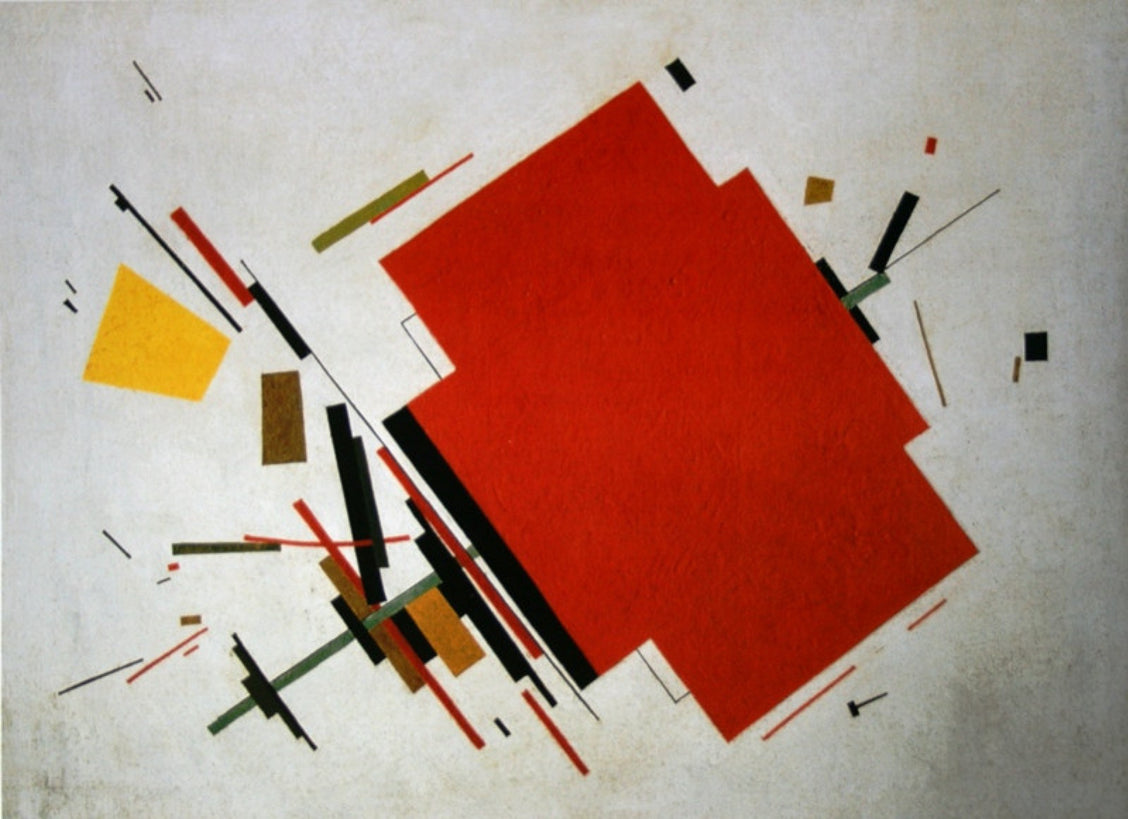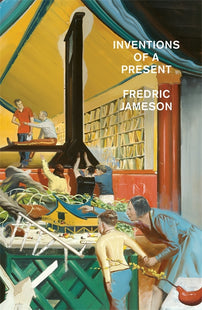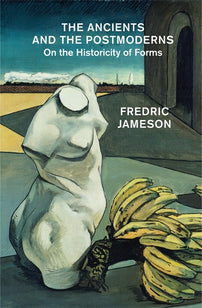Intense Curiosity: Jameson's The Prison-House of Language
Fredric Jameson's Prison House of Language (1972) is inspiring, Matthew Beaumont writes, because of the author's 'intense curiosity' vis-a-vis the Russian Structuralists. For Jameson's 90th birthday, Beaumont revisits the text, which he describes as anomalous in the theorist's oeuvre.

How does one come not merely to admire but to fetishize an author? I first read The Prison-House of Language, which was the first book by Fredric Jameson that I read, in a university library in 1991. I can still see it on the shelf. I was nineteen, and I immediately noticed that this slim, slightly austere-looking volume, its spine and cover an oddly alluring pond-green in colour, had been published in 1972, the impossibly remote year of my birth. Jameson himself, it transpired, had been in his late thirties when it appeared; though, nearly two decades later, in part because of the book’s urbane, supremely authoritative tone, in part because of its Olympian command of the philosophers of language it addressed, I naturally assumed he’d been ancient at the time.
By the 1990s, Literary Theory had been fully institutionalized in the UK. But, as a student, I decided that, instead of electing to do an undergraduate taught course in its rudiments, like those intimidating contemporaries of mine who, in an attempt to appear intellectually cool, claimed to have become addicted to Derrida as if to a Class-A drug, and who consequently regarded the taught course on Literary Theory as the intellectual equivalent of a methadone programme, I would read across its canon independently. I approached this auto-didactic task experimentally and tentatively. Or – to use a word I learned from Jameson – heuristically. But it wasn’t in relation to this informal curriculum that I first read Jameson. At the time, I was still ploughing through David Lodge’s collection Modern Criticism and Theory (1988) and hadn’t reached as far as the chapter in which Jameson is represented in this volume, namely his article on ‘The Politics of Theory’ (1984). I probably hadn’t heard of him, even though 1991 was the year in which his Postmodernism appeared in book form. No, I picked The Prison-House of Language from the shelf because I was expected to submit an essay on linguistics to my tutor. The book’s title, taken from Nietzsche, as I discovered when I came across its epigraph, seemed promising in this regard.
[book-strip index="1"]
Instead of replacing it on the shelf, or skimming its contents for what might be directly useful, I found myself reading the book carefully. In the first instance, this was not because I had to submit a dutiful essay on linguistics, but because it responded to my need to understand the Russian Formalists, in whose writings I’d already excitedly started to immerse myself. Leaping ahead to the section on ‘The Formalist Projection’, I was instantly intrigued by a sentence in which Jameson compared Russian Formalism, ‘as a concrete literary phenomenon’, not to literary-critical schools like the New Criticism, but to ‘genuinely creative movements such as German Romanticism and Surrealism’. This was fascinating. So the Formalists were themselves shaped by the revolutionary forces of European literary and cultural history… The concepts of Jakobson, Shklovsky et al., in Jameson’s to me inspiring interpretation, were also rhetorical tropes related to these individuals’ activities as avant-garde practitioners.
More prosaically, returning to the book’s front matter, the fact that it offered ‘A Critical Account of Structuralism and Russian Formalism’, as its subtitle indicated, differentiated it appealingly from the primers and textbooks fashionably marketed at students from the early 1980s. Written a good decade before Literary Theory became reified and commodified, not a sentence in the pages of The Prison-House of Language appeared pre-packaged. Or pre-digested. Every formulation, though it seemed effortlessly sophisticated, at the same time manifested signs of a strenuously thoughtful engagement with the ideas it clarified and subjected to critique. Moreover, as I sensed almost immediately, the book has what Jameson, briefly pointing at one point in its pages to the value of the historian Pieter Geyl’s scholarship, calls ‘great elegance for the mind’. This could not be said of the introductory accounts of Theory in the same section of the library, some of which seemed by comparison to offer little more than clumsy approximations of the ideas they sought to render comprehensible to students. Jameson’s insistence on taking Formalism and Structuralism as ‘intellectual totalities’, and of excavating their philosophical and ideological presuppositions as such, had an intellectual and methodological ambition that, for me, at this time, opened up all sorts of possibilities.
I read the book for extra-curricular reasons, then, half-suspecting that it was far too sophisticated for me to understand. And, in part perhaps because of this, the more I read, the more I read it with intense, readerly pleasure. (‘If I read this sentence, this story, or this word with pleasure,’ Barthes writes, ‘it is because they were written in pleasure (such pleasure does not contradict the writer’s complaints).’) Its bold, formidably abstract opening sentence – ‘The history of thought is the history of its models’ – was thrilling. I could already sense my intellectual horizons extending. Even more alluring was the last sentence of the Preface, the preceding paragraph of which discusses the dialectic of synchronic and diachronic, spatiality and temporality, that Jameson sees, with his habitual insight, as a crucial feature of Structuralism in spite of its apparent refusal of history: ‘Perhaps that is, indeed, the ultimate propaedeutic value of the linguistic model: to renew our fascination with the seeds of time.’ Here, the austere, perhaps faintly fussy, pedagogic prose of the clauses that precede the colon halts before the rousing poetic imperative of the one that succeeds it, which echoes not Althusser, say, but the ’50s science-fiction novelist John Wyndham. The combination of these styles, held in a slightly unstable state of tension, was itself enough to inspire in me what Jameson, referring to Saussure, identifies as ‘a liberation of intellectual energies’.
[book-strip index="2"]
In many respects, The Prison-House of Language is an anomalous book by Jameson, though its project of restoring history to the linguistic paradigms it reconstructs is entirely typical of him, as is his interest in ‘the sociology of forms’, for example, and his commitment to what, after Greimas, he calls ‘transcoding’. Its scintillating incidental readings of authors like Simenon are also echt Jameson. It is, however, probably his least explicitly Marxist book, even if its occasional allusions to the material base – as in the bracing mention of ‘back-breaking labor’ in his Blochian analysis of the fairy-tale form – make it apparent that this is by the author of Marxism and Form (1971). So, it is not because Jameson here reinvents Marxism, as he does in so many of his other books, that I often return to The Prison-House of Language. Nor is it even for its peerless conceptual and intellectual clarity in providing a ‘critical account’ of Formalism and Structuralism. It is because it reawakens in me the ‘passion for decipherment’ that he himself identifies in Structuralist thinkers, a passion that is eminently characteristic of his own critical, theoretical and political enterprise. This passion is rooted in what, to quote Lévi-Strauss’s evocation of his childhood interest in geology, as Jameson does in this book, can be identified as ‘intense curiosity’.
As a naïve, nineteen-year-old student, The Prison-House of Language was liberating to me because, even if I subsequently discovered that it was probably Jameson’s most sober book, it was effectively the start of an intellectual adventure, one with methodological and political implications that proved for me far-reaching. It felt like that from the moment I took it from the shelf, awakening an intense curiosity in me. In short, it was seminal for me. On an individual level, that is, it scattered seeds of time.


